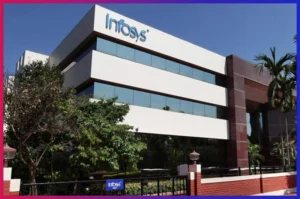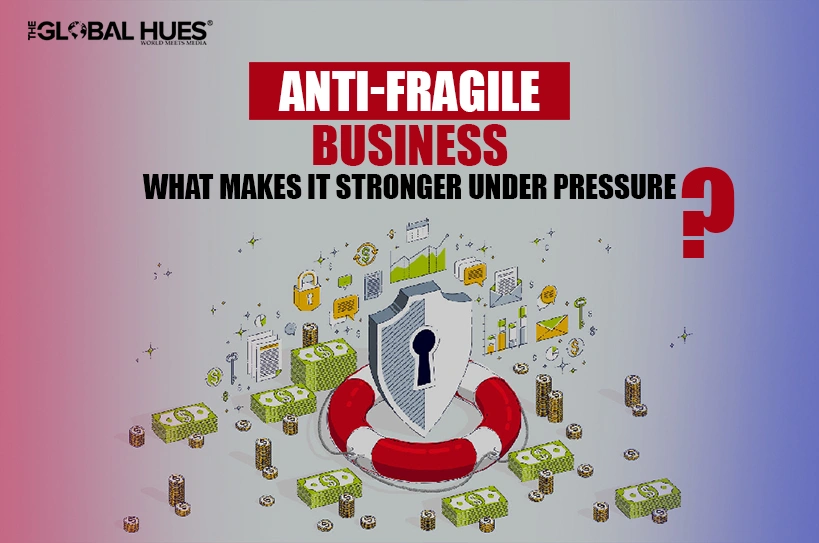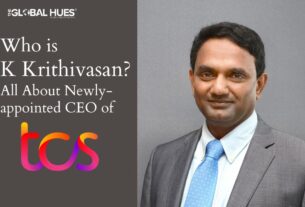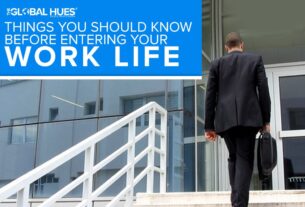Discover:
-
How can your business become anti-fragile?
-
How have big brands like Netflix, Toyota, and more stayed anti-fragile?
-
What lessons can you learn from them?
Everything in this world is fragile. Uncertainty, volatility, and risk are constant companions. While some companies might crumble under pressure, as seen during the pandemic, others thrive, becoming stronger with each challenge. This remarkable ability to hold on against external pressure and continue growing and improving is called ‘Antifragility’. In simple terms, “anti-fragile” means becoming stronger when exposed to stressors, uncertainty, or risk.
Nassim Nicholas Taleb, a professor, former trader, and hedge-fund manager, came up with the concept and coined the term. Unlike traditional resilience, which focuses on surviving shocks, antifragility embraces uncertainty, leveraging to innovate and advance.
Let’s delve deeper into the concept of anti-fragility, explore real-world examples of anti-fragile and reveal actionable strategies that can help you transform your organisation into an antifragile powerhouse.
Anti-Fragility For Businesses

From a business point of view, Anti-Fragility means avoiding reliance on any one product or strategy. Instead, businesses which believe in anti-fragility invest in several potential avenues for growth. Coined by Nassim Nicholas in his book, “Anti-fragile: Things That Gain from Disorder,” he explains that being anti-fragile is more than being resilient. It means actively seeking out stressors and challenges to grow stronger and better.
How can businesses become anti-fragile?
Embrace Failure
Failure is a part of everyone’s lives and those who are anti-fragile use failure as a learning opportunity. Businesses should view failure as a chance to grow and improve. It requires shifting your mindset from fear and avoidance to curiosity and experimentation.
Become Resilient
Resilience refers to being able to recover from setbacks and bounce back stronger than before. In this competitive market, businesses sometimes fail and succeed. As a person, it is important to keep on learning from your setbacks. Moreover, you should take care of yourself physically, mentally, and emotionally. Additionally, it also means building strong relationships and a support network.
Focus on Your Strength
You may get distracted by the latest trends. Acquiring new skills or more technologies will help you succeed. However, along with following the new trends, it is important to focus on your core competencies and then take on new challenges.
| Aspect | Explanation | Key Actions |
| Embrace Failure | Learn from setbacks to grow and improve. | Shift mindset to curiosity and experimentation. |
| Build Resilience | Recover stronger from challenges by prioritising well-being and support networks. | Prioritise physical, mental, and emotional health. |
| Focus on Strengths | Strengthen core competencies rather than chasing trends. | Identify and reinforce existing strengths. |
Anti-Fragile Businesses Examples
TOYOTA
Kaizen Philosophy
Toyota embraces the concept of continuous improvement, known as Kaizen. Through this philosophy, it encourages employees at all levels to constantly seek ways to enhance processes, products, and services.
Lean Manufacturing
Toyota has pioneered the lean manufacturing approach in the automobile industry. It focuses on eliminating waste, optimising production processes, streamlining operations, & maximising resource utilisation.
HAIER
Agile Organisational Structure
The company has a flexible and adaptable organisational setup that allows for rapid response to market changes and customer needs. Instead of the traditional pyramid of authority in every business, Haier operates as a network of tiny, independent units called microenterprises.
These enterprises have 10-50 individuals and they handle everything from product development, sourcing, marketing, and sales.
Customer-Centric Approach
By focusing on understanding its customer preferences, Haier develops customisable solutions that deliver a world-class user experience.
Innovative & Experimentation
The company thrives on innovation and continuously manufactures cutting-edge products with features such as smart refrigerators that order groceries and air conditioners that learn your preferences. Haier is constantly pushing the boundaries of what is possible.
Also Read: How Account-Based Marketing Transforms B2B Sales
NETFLIX
Adaptive Technology
Netflix is an online streaming platform that quickly adapts to its user behaviour, internet infrastructure and device capabilities.
Diverse Content Library
What makes Netflix an amazing online streaming platform is its array of original content spanning across various genres, languages, and formats. It helps reduce Netflix’s reliance on a single type of content or market segment. Additionally, it helps the company ride over the fluctuations in viewer preferences.
Subscription Model
Netflix’s subscription-based business model provides a steady stream of revenue, thereby allowing it to invest in content creation, technology infrastructure, and global expansion.
Resilient Supply Chain
Online streaming platforms became much more famous with the Indian audience during the pandemic. Likewise, Netflix with its robust supply of content acquisition and production maintained a steady stream of new releases during the pandemic.
DISNEY
Diverse Revenue Streams
Disney has multiple streams of avenues– Theme parks, Movies, Merchandise, and Streaming services. During the pandemic, the theme parks were shut down, but the company still received revenue through its online streaming services.
Intellectual Property Portfolio
Disney’s beloved intellectual properties like Marvel, Star Wars, Pixar, and classic Disney characters, served as the lifeline during the pandemic. With people under lockdown, the demand for entertainment surged and with its strong IP portfolio, it was able to deliver content across various mediums from movies to streaming platforms.
CADBURY
Diverse Product Portfolio
Cadbury has a comprehensive range of products that go beyond just chocolate bars. It has beverages, biscuits, and candies. This diverse portfolio helps mitigate risks associated with market fluctuations.
Also Read: Effective Investing Strategies To Thrive In Turbulent Times
Innovation & Adaptability
As a company, Cadbury continues to innovate its products and introduce new flavours, packaging, and marketing strategies to stay relevant. An example is Cadbury tailoring its marketing strategies to resonate with Indian consumers during the festive season. The “Kuch Meetha Ho Jaaye” campaign has essentially taken over the custom of giving traditional sweets to friends and families.
Learning Lessons From Failure
No one can predict whether a particular business will thrive or fail. Some companies have thrived for years, yet some had to shut down. Others couldn’t run for a few months as well. But both these situations can teach entrepreneurs and businesspeople a lot of lessons. Here are some of the lessons that you can learn from failure:
1. Infosys (IT Services)

Infosys is a prominent player in the IT services industry. However, it faced challenges during the 1980s. The primary setback was the struggle to ensure funding and gain the client’s trust. With the IT sector still in its nascent stages, many clients were sceptical about outsourcing their projects to Indian companies.
Lessons Learned?
Infosys took this setback as an opportunity for growth and development. Instead of giving up, the company focused on delivering high-quality services and emphasised training and innovation as the key pillars of its growth strategy.
2. Tata Nano
Tata Nano often referred to as the people’s car was launched by Tata Motors in 2009. However, being marketed as the world’s cheapest car caused setbacks due to perceptions of inferior quality and safety concerns. Furthermore, incidents like the car catching fire tarnished its reputation. It led to a lack of consumer trust and poor sales performance.
Also Read: 5 Important Aspects To Prepare Company Reputation In Market
Lessons Learned?
The company understood the importance of effectively communicating the overall value proposition beyond price. Subsequently, they also realised that they needed to prioritise quality, safety, and customer satisfaction.
3. Levi Strauss
In the early 2000s, Levi Strauss launched its Type 1 Jeans with exaggerated buttons, stitches, and rivets. They even ran a Super Bowl ad, but it confused customers, and the style didn’t become popular. Levi’s eventually had to abandon the product.
Lessons Learned?
While we don’t know Levi’s project management processes, improving internal communications can help avoid confusion, ensuring the final product has a clear message and is easily understood by end-users.
Summing Up
The mindset of antifragility helps businesses not just survive but thrive in uncertain times. By learning from failures, focusing on strengths, and constantly innovating, companies can adapt and grow. Examples like Toyota, Haier, Netflix, Disney, and Cadbury show that with the right approach, challenges can become opportunities for lasting success.



